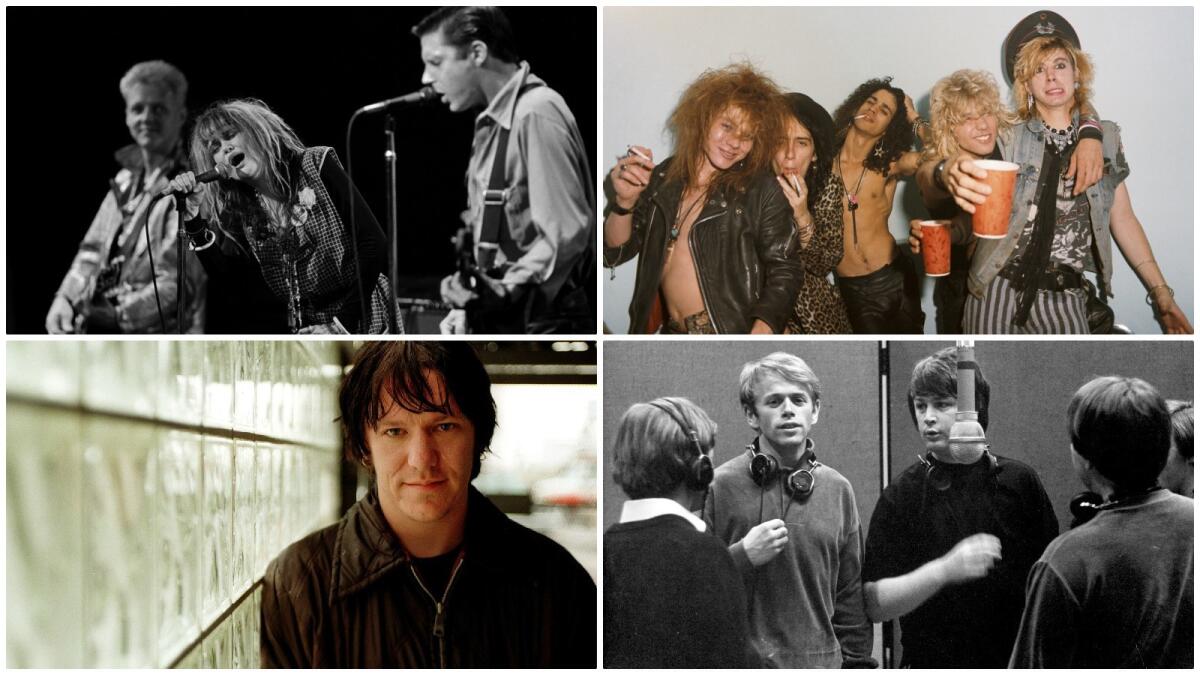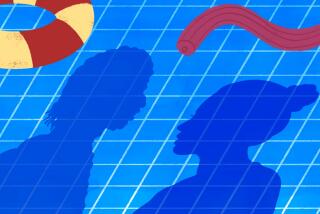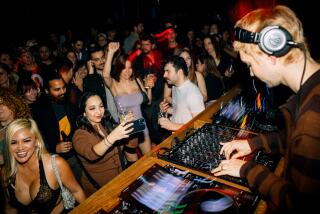Music-making memories of Sunset Boulevard, from the Beach Boys to Vince Staples

Attempting to quantify the volume of music stories that have transpired across the 22 miles of Sunset Boulevard is a fool’s game. But a few well-arranged snapshots from the thoroughfare’s recording studios, venues, record labels and shops across the decades can capture a range of tastes, genres and attitudes.
In punk singer John Doe’s recent book (with Tom DeSavia), “Under the Big Black Sun: A Personal History of L.A. Punk,” ex-Go-Go’s guitarist Jane Wiedlin describes being in the Whisky a Go Go dressing room between sets on the night that X singer Exene Cervenka’s sister died.
Despite the heartbreak — and Doe throwing a chair through a window -- Wiedlin writes that during X’s second set, “I felt like the club was going to burst into flames, the intensity was so great.”
FULL COVERAGE: Mapping Sunset Boulevard’s musical history »

Item No. 2 from California’s boulevard of song:
The late N.W.A manager Jerry Heller had offices on Sunset in West Hollywood. His autobiography, “Ruthless,” describes a run-in with neighbor and competitor David Geffen that spilled onto the street below.
After Heller called to ask him to look out his window, he writes, “Geffen came to the window across the street. ‘Here’s what I think of your taste in music.’ I began tossing Neil Young and Joni Mitchell tour posters out the window.”
The narrative tributaries angle off at every intersection, carrying stories about wild studio sessions and wilder nights chucking TV sets out of hotel windows, of epiphanies and overdoses and record label wars.
Barney Hoskyns, author of “Waiting for the Sun: A Rock & Roll History of Los Angeles,” calls the boulevard “the story of a journey, historically and geographically. A kind of river of history.”
Hundreds of record labels, venues and studios have occupied plots along Sunset. The only evidence that long-gone imprints such as Lizard, White Whale, Rappers Rap Disco Co., Crest, Command Performance and Peppermint Choo Choo existed are the Sunset addresses printed on the 45 rpm labels.
Those smaller shops competed against more established neighbors like Dot, Specialty, Philles, Asylum, Capitol, Ode, RCA, Geffen, A&M, Chrysalis, Liberty and Motown, all of which at one point or another had offices on Sunset. Today, Epitaph and Delicious Vinyl continue to work on the boulevard.
The moments wash over filmmaker Allison Anders, who shot parts of her film “Grace of My Heart” on Sunset.
“Even though those are not my memories, they resonate with me when I go on Sunset,” she says. “If I go past the Gower Gulch, I go, ‘Well, our first movie studio was right here.’ Our very first one! If I go further up at Crescent Heights, I’m like, ‘Well, Garden of Allah was here. Wasn’t Schwab’s there?’ ”
Keith Richards, in his autobiography “Life,” recalls testing songs in the parking lot of Tower Records and “driving up and down Sunset, listening at precisely the moment” when a DJ was set to play unfinished “Exile on Main Street” tracks “so that we could judge the mix. How did it sound on the radio? Was it a single?”
The Rolling Stones recorded “(I Can’t Get No) Satisfaction” at RCA Studios on Sunset. Prince recorded “Purple Rain” a few blocks down and across the street at Sunset Sound.
The Beach Boys recorded much of “Pet Sounds” on Sunset. The list goes on: Linda Ronstadt, Miles Davis, Aretha Franklin, Whitney Houston, k.d. lang and more recorded key records along its path.

This year rapper Vince Staples recorded “Big Fish Theory” at EastWest, which was formerly part of Ocean Way, which was formerly Bill Putnam’s United and Western Recorder studios.
On Sunset, the Eagles shot the cover of “Hotel California.” The great psychedelic rock band Love ascended to greatness on the same Whisky a Go Go stage as the Doors, Sparks, the Runaways, the Go-Go’s, the Germs, Guns N’ Roses and Linkin Park. Janis Joplin acquired one of her last bottles of Southern Comfort on Sunset, courtesy of Whisky a Go Go manager Mario Maglieri.
The liquor store where the Silversun Pickups snagged their name is on the same spot where decades earlier Club Havana entertained a Latin population ignored by the Hollywood Palladium.
On Sunset, Van Halen made its mark (Gazzarri’s) and the Bangles brought the Paisley Underground to the surface. Los Lobos’ cross-over gig was at the Whisky, which helped transform them from a hot East L.A. bar band to a citywide phenomenon.
At the east end in Echo Park, the late singer and songwriter Elliott Smith played the indie club the Echo not long after it opened. Also on the bill? Up and coming singer-songwriter Jenny Lewis’ band Rilo Kiley.

The prodigal rapper Earl Sweatshirt made one of his earliest live appearances below the Echo, onstage with rapper Action Bronson at the Echoplex.
Herb Alpert recalls starting out with the Tijuana Brass in the 1960s and playing the Interlude, which was above a jazz club called Crescendo. That same night, recalls Alpert, Lenny Bruce introduced Count Basie from atop a piano with a vulgar compliment about Basie’s brashness.
“Then he jumped off the piano and ran onto Sunset Boulevard,” says Alpert, laughing.
More to Read
The biggest entertainment stories
Get our big stories about Hollywood, film, television, music, arts, culture and more right in your inbox as soon as they publish.
You may occasionally receive promotional content from the Los Angeles Times.






